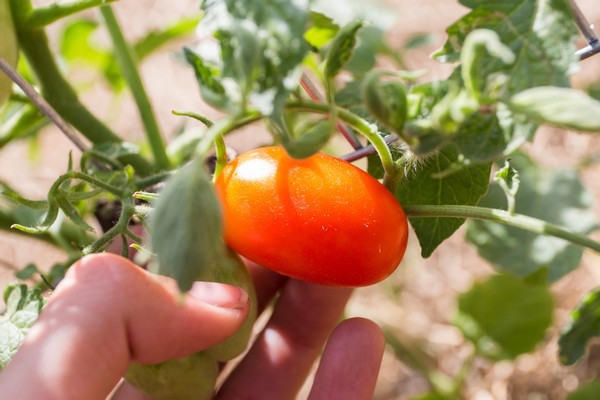New technology being developed by University of Florida scientists identifies two dangerous tomato diseases with 99 percent accuracy. This finding is critical because diseases can cost growers millions of dollars annually in the state’s third most valuable crop. Thus, the earlier farmers detect those ailments, the better their chances of treating them before the diseases cause excessive damage.

UF/IFAS photography.
Normally, growers walk through their fields and look at their crops to try to find and identify the types of diseases that have befallen their crops. Sometimes disease identification requires expertise that the farmer may lack.
To help tomato growers – and perhaps eventually other farmers – find diseases early and accurately, two UF/IFAS researchers used images from drone technology to see if they could distinguish between two perilous tomato diseases.
“Rapid and accurate identification of a plant pathogen is essential for implementing timely disease management tactics,” said Pamela Roberts, a UF/IFAS plant pathology professor.
For the new study, Roberts and Yiannis Ampatzidis, researchers at the UF/IFAS Southwest Florida Research and Education Center, flew drones over experimental tomato farms at the facility. The unmanned aerial vehicles took images of the crop and, from those pictures, the scientists were able to identify the diseases.
Through technology called a “multilayer perceptron neural network,” the scientists differentiated between bacterial spot and target spot, and did so with nearly perfect accuracy, Roberts said.
This technological advancement is critical for Florida tomato farmers, whose crop is the third most valuable in the state. In Florida, fresh market tomatoes bring in $400 million to $500 million annually, according to the National Agricultural Statistical Service, an arm of the U.S. Department of Agriculture.
Fresh market tomatoes face challenges from numerous diseases in Florida production.
If not detected early enough, these diseases might damage their crops. For example, target spot can cause up to $3.5 million a year in tomato damage, according to previous UF/IFAS research that showed a 30 percent yield loss each year on an average farm.
“If any of these diseases get bad enough, the grower might have to walk away from the field,” Roberts said. UF/IFAS researchers believe the new technology will help farmers keep their crops intact.
The new UF/IFAS study is published in the journal Precision Agriculture.
For more information: 
Brad Buck
University of Florida
Tel: +1 (352) 875-2641
Email: bradbuck@ufl.edu
www.ifas.ufl.edu
